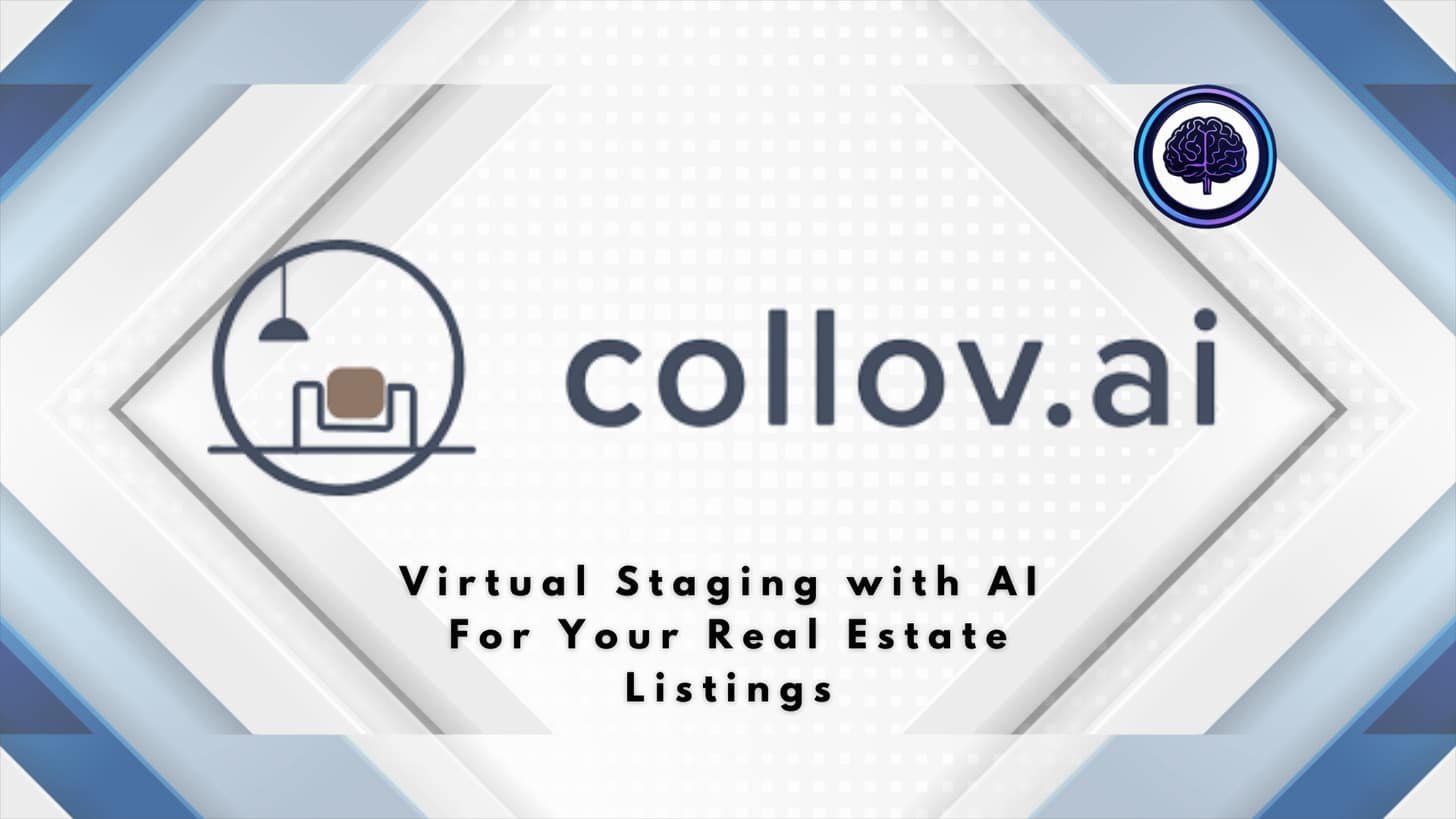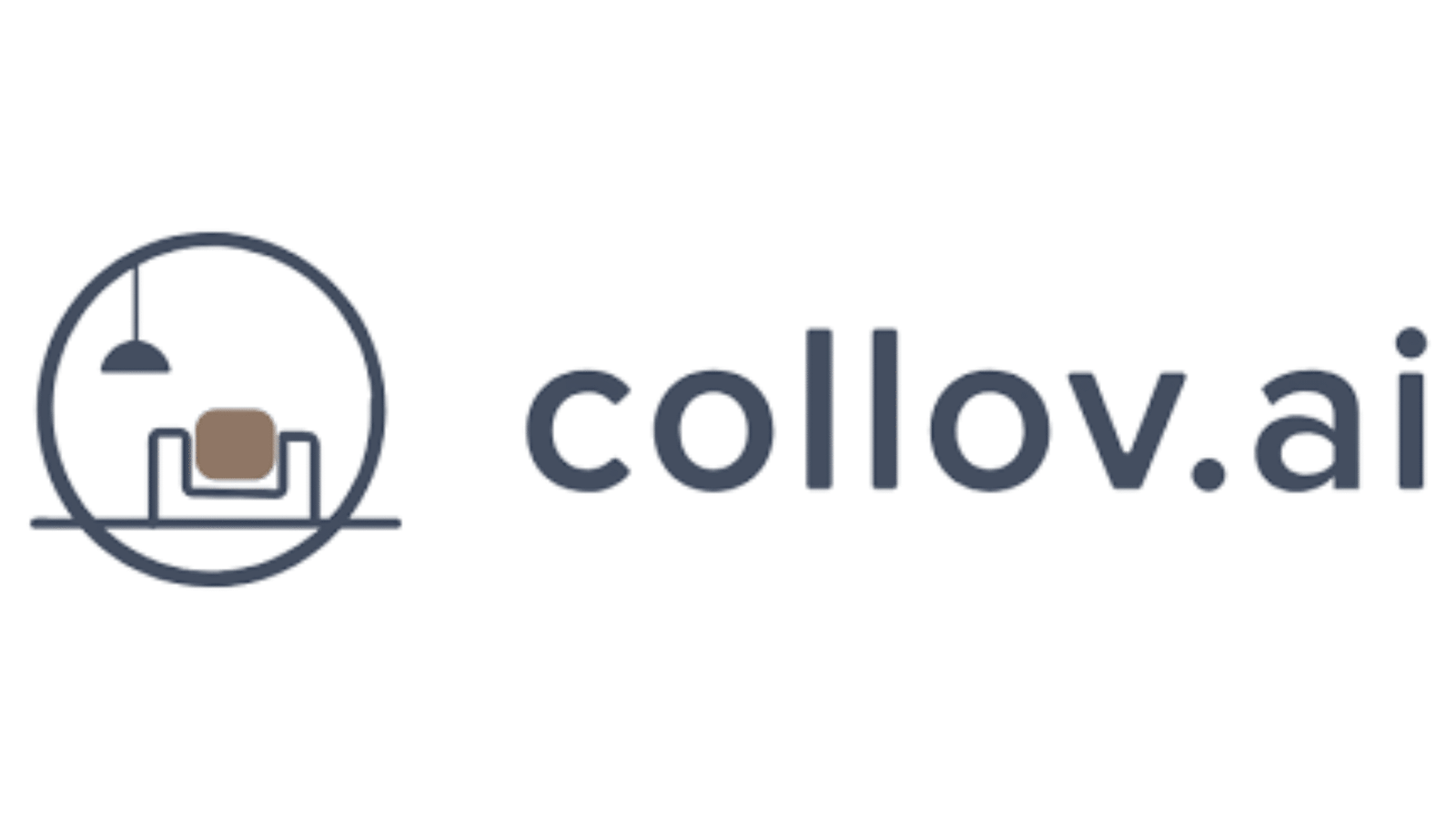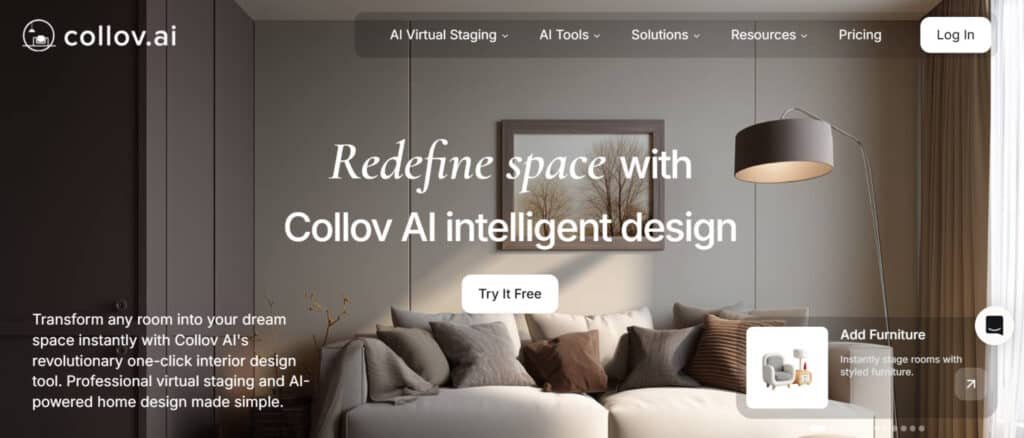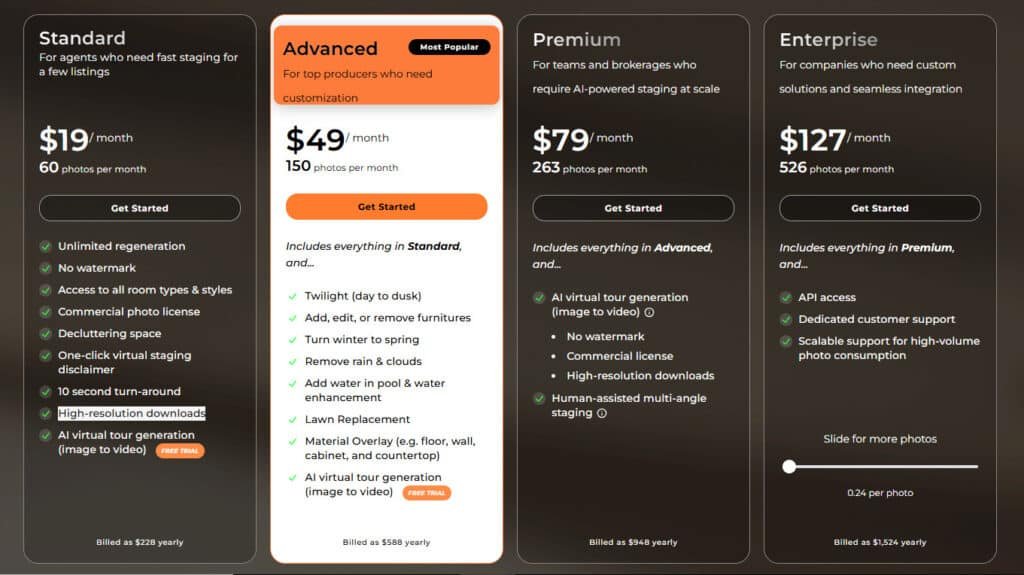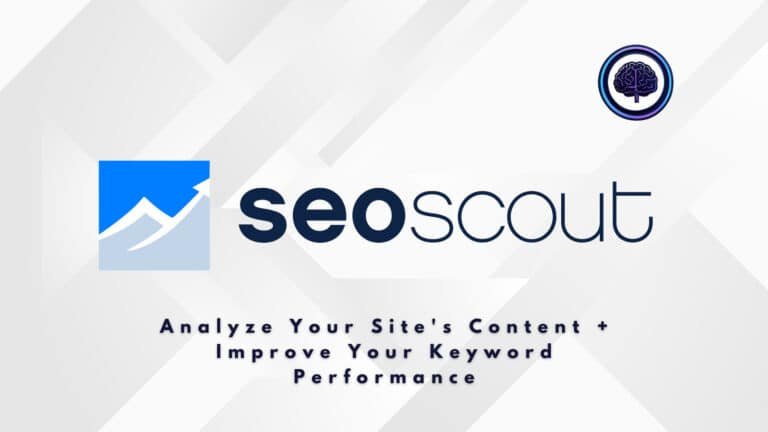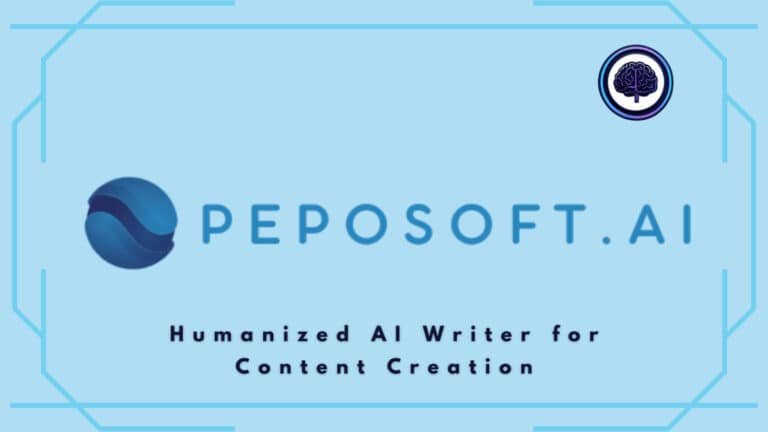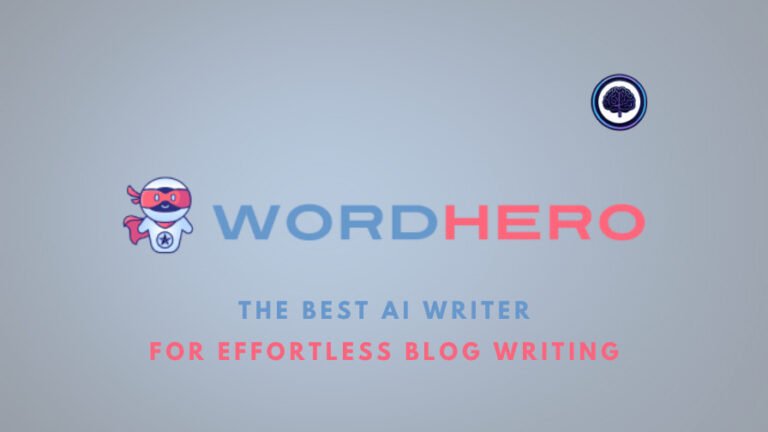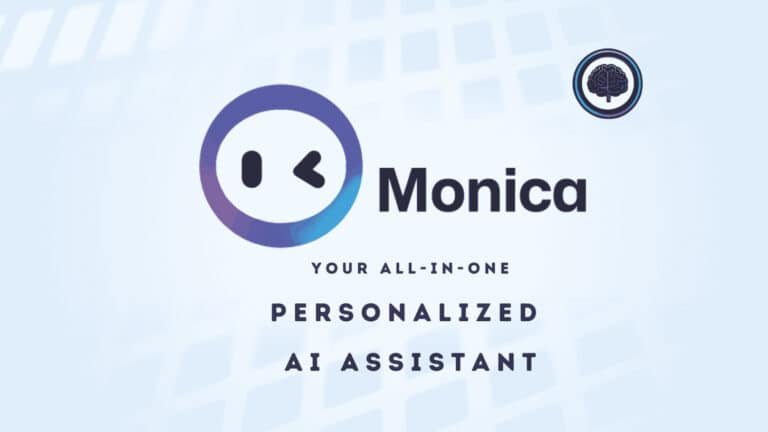You need fast, photorealistic staged images to sell listings — but hiring pros costs time and money, and clunky software wastes both.
It gets worse: rushed listings, poor visuals, and last-minute edits leave you scrambling. That delays sales and frustrates clients who expect polished design and quick turnarounds.
I tested a web-based platform (with an iPhone app) that promises room-specific staging, realistic materials, and a workflow you can use between showings. I’ll walk you through who built it, how it fits todays AI design landscape, and whether the features, pricing, and free option match real estate pros’ needs.
Why read on: I’ll show real results from my test drives, share common user complaints (watermarks, exterior quirks, occasional distortions), and give a clear verdict so you know if this tool saves time and improves listing images.
Ready? Let’s dive in.
Key Takeaways: Collov AI Review
- The Collov AI Review covers origin, platform access, and target users.
- Expect useful design tools for interiors and quick image staging.
- Free tier exists; advanced edits and watermark removal may cost extra.
- Mixed user feedback — great photorealism sometimes, but occasional distortions.
- I tested multiple room types to evaluate speed, image quality, and real-world use.
- The article will compare features, pricing, pros/cons, and alternatives.
Collov AI Review: An Overview
Raamish’s Take
Collov AI stands out as an AI virtual staging tool for real estate and design pros. I’m impressed by its speed and ease of use—upload a photo or floorplan, pick a style, and get high-res results in seconds, cutting costs on traditional shoots.
Key features include one-click staging with unlimited tries, decluttering, and material overlay for walls or floors. The AI virtual tour turns images into videos, while API access suits enterprises. It boosts sales 73% faster with 78% more buyers, per user stats.
One of a unique platform of it’s kind, The platform’s efficiency wins for real estate virtual staging features at low price.
Want to showcase multiple real estate options to clients and impress them? Collov AI delivers 2K resolution and commercial licenses, trusted by 10K+ agents.
It’s a solid pick for scaling listings.
Introduction To Collov AI (Background, and How It Fits the AI Landscape)
Real estate marketing now expects staged, sale-ready photos within hours, not days. I’ve seen teams swap costly rentals and last-minute shoots for fast digital staging that keeps listings moving.
Where this sits in the market: Nowadays, AI interior design tools moved from experimental to essential. This product focuses on quick, photorealistic results rather than full 3D modeling. That makes it a practical choice for agents and designers who need speed and consistent visual output.
Company background and purpose
The company launched in 2020 and is headquartered in the United States. Its goal is simple: streamline the staging process so you can upload image, pick a type room, choose a style, and get export-ready results fast.
Who uses it and why it matters
- Realtors and photographers use it to boost listing appeal without staging physical furniture.
- Designers use it for quick concept iterations and client previews.
- Teams value the system’s time savings and the option of a free tier or trial before scaling up.
In short, this tool trades deep engineering detail for usable speed—ideal when the goal is to attract buyers and show a home’s potential quickly.
What Is Collov AI and How It Works for Interior Design and Virtual Staging
I started using a web staging tool to turn simple property photos into sale-ready images in minutes. The core workflow is straightforward: you upload image, choose the type room, pick a desired style (Bohemian, Farmhouse, Traditional), and hit generate.
Core workflow
The system analyzes your image and adapts flooring, paint, lighting, and decor to match the existing space. Outputs are photorealistic visualizations that keep the original angles and proportions.
Who benefits and why
This is design software made for busy professionals. Realtors and real estate photographers gain market-ready photos fast. Marketers get consistent imagery for listings and ads. Interior enthusiasts can test directions before buying.
- Quick staging: declutter or replace furniture without a crew.
- Multiple styles: compare looks side-by-side to speed decisions.
- Mobile-friendly: an iPhone app lets you stage on-site after you take photos.
Bottom line: This tool speeds up the design process and delivers export-ready visuals you can use immediately — ideal when time is the limiting factor.
Best Features of Collov AI
I ran several property photos through the editor to observe standout features and quirks. Below I list the core benefits and a few real limitations you should know before you hit export.
This AI-powered platform is a game-changer for real estate professionals, designers, and homeowners, offering tools to create stunning, photorealistic visuals in seconds.
From virtual staging to photo enhancements, these features help sell properties up to 73% faster, attract 78% more qualified buyers, and boost listing prices by 20%.
Below is a detailed breakdown of every feature, optimized for your business needs, organized for clarity and ready to elevate your next listing.
1. Core Products
These foundational tools form the backbone of Collov AI, enabling quick enhancements for property listings and delivering an exceptional customer experience.
- Virtual Staging AI-powered tool to transform empty or under-furnished spaces into beautifully furnished rooms. It generates professional staging to boost appeal, attract qualified buyers (+78% more), accelerate sales (+73% faster), and increase listing prices (+20%). Screenshot 2 highlights this with a “Try Now” CTA and example transformations (e.g., a staged living room with sofas, tables, and decor). Applies to homes, rooms, and real estate broadly, enhancing the overall space for potential buyers.
- Photo Editing Professional-grade AI suite for refining property images, including lighting adjustments, object removal, and visual polishing to create buyer-attracting visuals. Screenshot 1 lists several sub-tools under this umbrella, ensuring top-notch service for your listings.
- Virtual Tour Builds immersive 360° interactive tours from photos, allowing remote property exploration to foster emotional connections and reduce in-person showings. This service elevates customer engagement with every space showcased.
2. Virtual Staging Options
Links to advanced or inspirational areas for deeper engagement.
- Home Virtual Staging: Dedicated workflow for full-home transformations, combining multiple rooms.
- House Virtual Staging: Whole-property staging, including exteriors and multiple interiors.
- Real Estate Virtual Staging: Tailored for agents, with batch processing and MLS-ready exports.
- Idea Center: Curated gallery of AI-generated designs, trends, and user examples to inspire custom projects.
3. Specific AI Transformation Tools
These granular, one-click features allow precise edits across staging and editing. They integrate seamlessly—upload a photo, select a tool, and apply.
- Add Furniture Instantly adds realistic furniture, decor, and layouts to empty rooms. Supports various scales and styles for photorealistic integration. This helps buyers visualize occupancy, boosting engagement and sales speed by 73%.
- Furniture Eraser Removes specific furniture or objects from photos without affecting surroundings. Ideal for decluttering or customizing existing setups. It cleans up cluttered shots for a more appealing, professional look.
- Room Declutter Automatically detects and removes multiple unwanted items (e.g., personal belongings, trash) across an entire room. It creates minimalist, inviting spaces that highlight architecture and potential.
- Enhance Photo Quality Upgrades resolution, sharpness, color balance, and lighting in low-quality images using AI. It can turn an amateur photos into crisp, magazine-ready visuals that justify premium pricing.
- Material Overlay Applies new textures, colors, or materials to surfaces like walls, floors, or counters (e.g., wood to tile). This demonstrates renovation options without physical work, appealing to fixer-upper buyers.
- Changing Seasons Overlays seasonal elements like spring flowers, summer greenery, autumn foliage, or winter snow on exteriors/interiors. This feature aligns listings with holidays or buyer preferences for year-round appeal.
- Rain to Shine Edits out rain, fog, or overcast weather, replacing with clear skies and sunlight. Benefit: Showcases properties in optimal conditions, increasing views by up to 35%.
- Natural Twilight Converts daytime shots to natural dusk lighting with soft shadows and warm tones. This highlights architectural features during “golden hour” for a cozy, premium feel.
- Virtual Twilight Creates artificial twilight or nighttime scenes with artificial lighting simulations. It makes properties stand out in evening views, ideal for urban or luxury listings.
- Add Water to Empty Pool Fills empty or drained pools with realistic, sparkling water, ripples, and reflections. This can lead to enhanced outdoor luxury appeal, drawing in high-end buyers focused on amenities.
- Lawn Replacement (extends outdoor edits): Replaces patchy grass with lush, green lawns. Improves curb appeal instantly.
- Pool Water Enhancement (variant of Add Water): Clears cloudy water for crystal-clear results.
4. Design Styles and Customization Options
Users can select predefined aesthetics during staging for instant style swaps. These apply to Virtual Staging and Add Furniture.
- Scandinavian: Clean, minimalist designs with light woods, neutrals, and natural elements. Benefit: Appeals to modern, functional buyers.
- Modern: Sleek lines, bold colors, and contemporary furniture. Benefit: Targets urban, trend-forward clients.
- Industrial: Exposed materials like brick/metal with raw, edgy vibes. Benefit: Suits loft-style or creative spaces.
- Luxury: Opulent fabrics, chandeliers, and high-end details. Benefit: Justifies 20% higher offers for upscale properties.
General styles (site-wide): Includes traditional, minimalist, bohemian—swap via one click to help clients explore aesthetics.
5. Design Types and Room-Specific Applications
Specifies room-focused presets for targeted staging, ensuring context-aware furniture and layouts.
- Living Room: Stages cozy seating areas with sofas, coffee tables, and entertainment setups.
- Bedroom: Adds beds, nightstands, and soft lighting for restful, personalized vibes.
- Dining Room: Includes tables, chairs, and decor for elegant entertaining scenes.
- Home Office: Equips desks, chairs, and shelving for productive, remote-work appeal.
These integrate with general tools for any room type.
6. Additional AI-Powered Solutions and Integrations
- Video Creator: Generates short marketing videos from staged photos or tours, with animations and music.
- Idea Center (expanded): Beyond exploration, it offers AI-suggested concepts based on uploaded spaces.
- Batch Processing and Mobile App: Handle multiple photos at once; app for on-the-go edits.
- Enterprise Custom Solutions: API integrations, white-labeling, and unlimited usage for teams (contact for details).
With Collov AI, uploading a photo unlocks these features—processed in seconds and exported as high-res files for listings, tours, or social media.
Web platform plus iPhone app lets you start edits in the office and finish at a showing—handy when time is tight.
“Fast outputs, realistic materials, but check every image before publishing.”
| Feature | Benefit | Notes / Limitations |
|---|---|---|
| Style variety | Match buyer profiles quickly | Good breadth; not infinite custom design |
| Photorealistic materials | Better listing images and social assets | Best with high-res photos |
| Export-ready images | Quick handoff to MLS and brochures | Watch for occasional distortions (legs, decor) |
Pricing Plan for Collov AI
Collov AI offers flexible pricing with a subscription model for virtual staging pros. Change or cancel anytime; free trials available.
Standard Subscription
$27/month or $19/month annually (billed $228/year, 25% off). For agents: 60 photos/month, unlimited regeneration, no watermark, all room types/styles, commercial license, decluttering, one-click disclaimer, 10s turnaround, high-res downloads, AI virtual tour (image-to-video).
Advanced Subscription
$59/month or $49/month annually (billed $588/year). Most popular for producers: includes Standard + 150 photos/month, twilight (day-to-dusk), add/edit/remove furniture, winter-to-spring, remove rain/clouds, pool water add/enhance, lawn replacement, material overlay (floor/wall/cabinet/countertop), AI virtual tour.
Premium Subscription
$99/month or $79/month annually (billed $948/year). For teams: includes Advanced + 263 photos/month, human-assisted multi-angle staging, no watermark, commercial license, high-res downloads, AI virtual tour.
Enterprise Subscription
$170/month or $127/month annually (billed $1,524/year). For companies: includes Premium + 526 photos/month, API access, dedicated support, scalable high-volume, $0.24/extra photo.
| Plan | Monthly Price | Annual Price (Save 25%) | Photos/Month | Key Features |
| Standard | $27 | $19 (billed $228) | 60 | Unlimited regeneration, no watermark, all room types/styles, decluttering, AI virtual tour |
| Advanced | $59 | $49 (billed $588) | 150 | Includes Standard + twilight, furniture edit, seasonal changes, pool/lawn enhancements |
| Premium | $99 | $79 (billed $948) | 263 | Includes Advanced + multi-angle staging, enhanced support |
| Enterprise | $170 | $127 (billed $1,524) | 526 | Includes Premium + API, dedicated support, $0.24/extra photo |
- Before committing, run a batch of test images on the trial to measure cost per room.
- Keep receipts and screenshots to help if billing disputes arise.
- Confirm seat limits, output quotas, and export formats for your products or services.
Pros & Cons of Collov AI
When time is tight, a staging system that produces multiple looks per room can be a game changer. Below I list what works, what trips teams up, and when to look elsewhere.
Pros
- Fast turnaround: Quick results save you time and keep listings moving.
- Photorealistic design outputs: Better visuals improve marketing and brochures.
- Multiple options per room: Streamlines client approvals and A/B tests.
- Mobile access: On-site staging via an iPhone app speeds decisions.
- Cost savings: Less expense than traditional staging for many projects.
Pros summary: If speed-to-market and cost control matter more than deep CAD precision, this tool gives a practical edge for real estate projects and marketing workflows.
Cons
- Inconsistent quality for some rooms—furniture distortions and odd placements appear in a minority of outputs.
- Exterior or structural misplacements (cabinet or wall removal) can make images unusable for listings.
- Editing and watermark removal often require higher tiers—expect paywalls for polished exports.
- Limited training/support and occasional billing friction slow teams under deadlines.
If those downsides are deal-breakers, read on—there are solid alternatives that fit different needs and budgets.
Alternatives to Collov AI
Collov AI turns empty rooms into furnished spaces fast. You upload a photo, choose a style like Scandinavian or boho, and get realistic renders in seconds.
Real estate pros love it—staged homes sell 73% quicker and for 7-20% more, per NAR stats. At $9/month starter (50 images), it’s easy on the wallet.
I staged a living room last month; clients signed the listing same day. But if you want more styles or exterior help, these six tools fit different needs.
AI Home Design
AI Home Design redesigns rooms in 30 seconds with 7+ styles, plus object removal for decluttered looks. It handles tricky spots like bathrooms. Free trial, then $0.24 per image. Agents flip properties faster without physical staging costs – Read Full Review
REImagineHomeAI
REImagineHomeAI creates photoreal redesigns with custom prompts and mood boards. Pros build client visions quick. Unlimited at $29/month. I used it for a kitchen reno pitch—client said yes on the spot, saved hours of sketching – Read Full Review
HomeDesignsAI
HomeDesignsAI covers interiors and exteriors in 80+ styles, from farmhouse to industrial. Outputs in under 30 seconds cut design time by 70%. $19/month basic (100 designs). Renovators test ideas cheap before buying paint – Read Full Review
MyRoomDesigner
MyRoomDesigner chats with you to apply themes like “cozy modern” or Magnolia style. Homeowners tweak colors easy. Free trial, $15/month. It sparked my bedroom refresh—felt like talking to a friend who gets decor – Read Full Review
VirtualStaging AI
VirtualStagingAI furnishes bare rooms in 10 seconds across 50+ styles, with multi-angle views. Listings get 20% higher offers. $16/month for 6 images. Realtors close deals faster, no furniture rental fees – Read Full Review
InstantDecoAI
InstantDecoAI renovates photos with day-to-dusk lighting and 50+ styles. E-com sellers boost sales 15% with better visuals. $39/month unlimited. Great for product shots in styled homes – Read Full Review
These tools go beyond basic staging—some save money on renos, others speed listings.
| Tool | Key Strengths | Starting Price | Best For |
|---|---|---|---|
| Collov AI | 35+ styles, fast staging, API | $9/month | Quick real estate flips |
| AI Home Design | 7+ styles, object removal, bathrooms | $0.24/image | Agents & tricky rooms |
| REImagineHomeAI | Photoreal, mood boards, custom | $29/month | Client pitches & renos |
| HomeDesignsAI | 80+ styles, exterior too | $19/month | Full home redesigns |
| MyRoomDesigner | Chat themes, homeowner easy | $15/month | Personal inspiration |
| VirtualStaging AI | 50+ styles, multi-view, higher offers | $16/month | Listings & fast sales |
| InstantDecoAI | Lighting edits, renovations | $39/month | E-com & polished visuals |
- Traditional virtual staging services — AI HomeDesign and VirtualStaging AI furniture choices; better for luxury or complex rooms but costlier and slower.
- Other generative tools — Different systems offer varied style fidelity and guardrails; test the same image across products to compare capabilities.
- Full 3D design software — Ideal for interior designers and architects who need granular control; slower but precise for brand-critical hero images.
“Start AI-first for routine rooms; switch to services or 3D software for specialty spaces or compliance-sensitive listings.”
Case Study and Personal Experience with Collov AI
Several real estate photographers and agents told me the tool produced pro-looking photos that fit tight schedules. One photographer called it a lifesaver for last-minute shoots — consistent outputs cut post-production time and kept listings moving.
Realtors reported saving hundreds per listing. Some used staged images in brochures and saw properties go under contract within 48 hours. Users praised the declutter-and-refresh ability for making small spaces read larger and more inviting.
My Experience
I ran living room, bedroom, and dining room images through multiple style presets. The best results showed clean lines, balanced lighting, and realistic furniture placement. Modern and transitional styles were most reliable; maximalist looks sometimes pushed decor into odd spots.
Turnaround time averaged minutes per image. Generating three alternate designs per room helped clients pick a direction fast and cut back-and-forth time.
Stumbles included complex reflections, busy textures, and the occasional exterior misplacement (outdoor seating too close to landscaping). Those errors were easy to catch with a quick QA pass before publishing.
“For everyday real estate marketing, the tool sped up deliverables and produced solid images; for hero shots or tricky rooms, add manual QA or a specialist.”
| Use case | Outcome | Notes |
|---|---|---|
| On-site staging (iPhone app) | Fast edits; saved follow-up visits | Convenient for showings; great for quick changes |
| Brochures & listings | Professional images; faster sales | Check fixed elements (kitchens) for compliance |
| Multiple designs per room | Better client decisions | Three variants helped speed approvals |
Bottom line: For routine projects and everyday interior design marketing, this tool accelerates workflows and delivers usable images. For hero photos or compliance-sensitive rooms, pair it with manual checks or higher-touch services.
Conclusion
Raamish’s Take
Collov AI stands out as an AI virtual staging tool for real estate and design pros. I’m impressed by its speed and ease of use—upload a photo or floorplan, pick a style, and get high-res results in seconds, cutting costs on traditional shoots.
Key features include one-click staging with unlimited tries, decluttering, and material overlay for walls or floors. The AI virtual tour turns images into videos, while API access suits enterprises. It boosts sales 73% faster with 78% more buyers, per user stats.
One of a unique platform of it’s kind, The platform’s efficiency wins for real estate virtual staging features at low price.
Want to showcase multiple real estate options to clients and impress them? Collov AI delivers 2K resolution and commercial licenses, trusted by 10K+ agents.
It’s a solid pick for scaling listings.
When listings need polished visuals in hours, virtual staging becomes a practical asset for real estate pros.
I recommend this platform for agents and small teams who want fast, affordable design outputs and export-ready images. Use the free trial to test three room types and two styles each—validate quality before you scale.
Strengths: Quick visualizations, multiple designs per room, and a simple web + iPhone workflow. Watch for QA—check images for odd placements and read pricing details (per month limits and edit paywalls).
If your projects need hero-level, custom design, pair this tool with higher-touch services. Otherwise, try the website, run the trial, and standardize the best results into your home design SOPs.
Frequently Asked Questions
What is Collov and how does it work for virtual staging?
Collov is a web-based virtual staging and interior design platform that lets you upload a photo of a room, select the room type and a desired style (like Farmhouse or Bohemian), and generate photorealistic staged images. The system replaces or removes furniture, adjusts materials and lighting, and produces export-ready visuals for listings, brochures, or social media.
Who should use this platform and why?
Realtors, real estate photographers, marketers, and interior design enthusiasts benefit most. I’ve used it for rapid turnarounds—it’s ideal when you need multiple styled options fast to test buyer response or refresh listing images without on-site staging costs.
Is there a free trial or free version to test before committing?
Yes. There’s a free tier and a free trial so you can try core features without upfront payment. Expect some limitations—watermarks on exports and reduced access to higher-resolution or bulk features until you upgrade.
What pricing structure and plans are available?
Pricing typically includes monthly and annual tiers with different usage limits and feature access. Monthly plans give flexibility; annual plans lower the per-month cost. Higher tiers remove watermarks, add export credits, and unlock advanced editing options.
Can I remove watermarks and edit existing designs? Are there paywalls?
Removing watermarks and accessing full edit/export capabilities is usually behind a paywall. You can preview staged results in the free tier, but high-res downloads and unlimited edits require a paid plan.
How photorealistic are the generated images and materials?
The platform produces strong photorealism for interiors—accurate flooring, paint, lighting, and decor in many styles. I find indoor scenes work best; occasional object distortions or exterior placement quirks can happen, so review each image before publishing.
How many design options can I generate per room?
You can generate multiple design variations quickly to compare layouts and styles. The exact number depends on your plan and credits, but even the free tier provides several options for A/B testing listings or client presentations.
What file types and image sizes are supported for uploads and exports?
The platform supports common image formats (JPEG, PNG). Export resolution varies by plan—paid tiers offer higher-resolution downloads suitable for print and high-quality listing photos; free exports tend to be lower resolution and watermarked.
Is there a mobile app for on-the-go staging?
Yes—a mobile (iPhone) app complements the web platform so you can stage images and review results while on site or between showings. The workflow is similar: upload a photo, choose room type and style, then generate visuals.
Can it declutter or replace furniture in existing photos?
Yes. The tool can remove clutter and replace or rearrange furniture to showcase usable layouts. This is especially useful for vacant or lived-in listings where you want to demonstrate scale and flow.
Are there limitations or common issues I should know about?
Users report occasional glitches—object distortions, imperfect exterior placements, and the need for manual touch-ups in some scenes. Also check support policies—refunds and cancellations have raised concerns for some users.
How long does it take to generate staged images?
Generation time is usually fast—often a few seconds to a minute per design—though it can be longer for high-res or complex edits. I found the speed excellent for quick client reviews and iterative design testing.
Can designers and teams collaborate on projects within the platform?
The platform supports multi-user workflows and project management features on higher-tier plans, making it suitable for small teams, agencies, and photographers who need shared access and organized asset exports.
What alternatives should I consider for virtual staging or 3D design?
Alternatives include traditional virtual staging services, other AI-driven image generators, and dedicated 3D design software (like SketchUp or Matterport for immersive tours). Choose based on budget, realism needs, and whether you require full 3D walkthroughs.
Are there export options suitable for MLS listings and marketing materials?
Yes—paid plans provide export-ready images sized for MLS, brochures, and social platforms. Always verify resolution and watermark removal before publishing to listings or marketing collateral.
Does the platform handle exterior staging or outdoor scenes well?
Exterior and outdoor placements can be hit-or-miss. The tool excels indoors; for exteriors, review outputs carefully and expect occasional alignment or realism issues that may need manual edits or a 3D service.
What support and learning resources are available?
Documentation, tutorials, and customer support are available via the website and app. There are guides for choosing room types, styles, and best-practice photography tips to get the most realistic results.
How does it help with turnaround time and cost compared to physical staging?
Virtual staging drastically reduces cost and turnaround—what would take days and thousands of dollars with physical staging can be done in minutes for a fraction of the price. That makes it a practical choice for busy agents and photographers.

